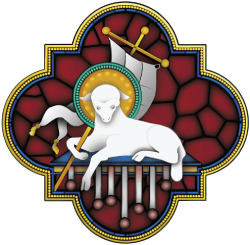In Search of Growth
The Diocese of Easton, which a decade ago was contemplating a merger with one of its neighboring dioceses (Maryland, Delaware, or Southern Virginia), now understands itself as a resurrected small diocese and an example of growth within the Episcopal Church.
This renewal is the direct result of Parousia, an initiative aimed at helping the diocese regain its vitality. The diocese’s convention approved ten discernment resolutions in 2015 under the guidance of Bishop Provisional Henry N. Parsley. The conventions of 2019 and 2020 affirmed a 32-page document, “Parousia: God Vision for God’s Church on the Eastern Shore of Maryland.”
“Parousia is based on needs identified by the diocese before, during, and after Bishop Marray’s installation as our 11th bishop,” said the Rev. Charlotte Meyer, a deacon and chair of the Diocesan Fund for Church Initiatives. “This document was written by Bishop Marray as an answer to the needs he encountered.”
The Rt. Rev. Santosh Marray became Bishop of Easton in 2016.
John C. Dragone, lay canon to the ordinary, calls the initiative “a blueprint on how to face short- and long-term challenges in the diocese.”
The diocese celebrated Parousia’s success during its convention on March 7-9. “I wish to inform convention that without a doubt both the ten resolutions and Parousia have fulfilled what they were designed to do, which was to give new impetus, renewed hope, energy, revitalization, and resurrection to a historic story,” Marray said in his address.

Parousia is financially sustainable partially because of the sale of St. Stephen’s Church in East New Market, which helped create the Fund for Church Initiatives. The fund is open to all the parishes of the diocese, helping to lift financial pressure and to allow congregations to live by the incarnational aspects of ministry.
Easton’s clergy shortage is now a surplus, thanks in part to partnering with Seminary of the Southwest’s Iona Collaborative. Marray said in his address that he will have ordained 19 people from 2020 to the end of 2024. The diocese also established a Bishop’s Institute for ministry training and formation. Since its launch in 2019, the institute has trained 200 lay leaders.

The diocese has bolstered its work in Latino ministry. Dr. Mark Hansen, lay pastor of St. Clement’s and diocesan missioner for Latino Ministry, and the Rev. Dr. Thomas G. Sinnott have been instrumental in this imperative. Hansen said that his “current diocesan employment is a direct consequence of the Parousia initiative,” and he is pleased by the work being done around Easton, including the training of Latino lay leadership and bilingual ministries at St. Clement’s in Massey. The diocese complemented this home-grown training by sponsoring participants’ attendance at a biennial conference at Kanuga this June, according to Hansen.

Convention included an account by Sinnott about a mission congregation, originally started in 1997 as a “joint outreach effort of Shrewsbury Parish Church, Kennedyville, and St. Andrew’s Episcopal Church in Sudlersville.” After years of development work, with Sinnott in the lead as vicar since 2004, La Sagrada Familia de Jesús “was formally accepted into the diocese at annual convention in Cambridge, Maryland, on March 3, 2019.” Sinnott envisions continued growth and challenges, noting that plans are being made for the next priest, one who’s “younger and mission-minded” to take over when he retires.
John Dragone believes that Parousia succeeded because goals that seemed difficult were “accessible if we put the work into meeting the challenges. The response by parishes and individuals across the diocese in stepping up to work through the challenges and share lessons learned throughout the process was inspiring.”
The Rev. Darcy Williams, priest in charge of Augustine Parish in Chesapeake City, one of the Parousia team leaders, says the diocese has become “a smaller but more responsive church,” and that “small parishes that seemed to be on the verge of closing have found new life, energy, and stability.”




